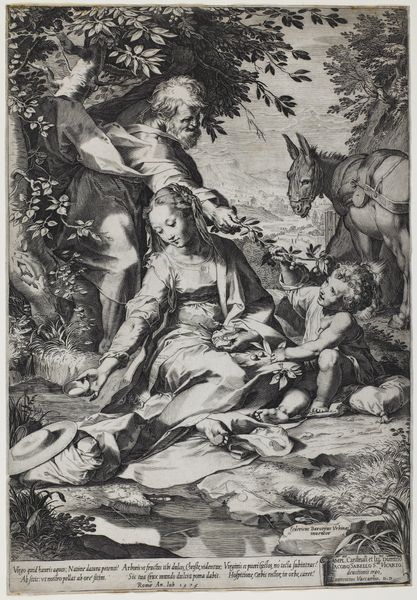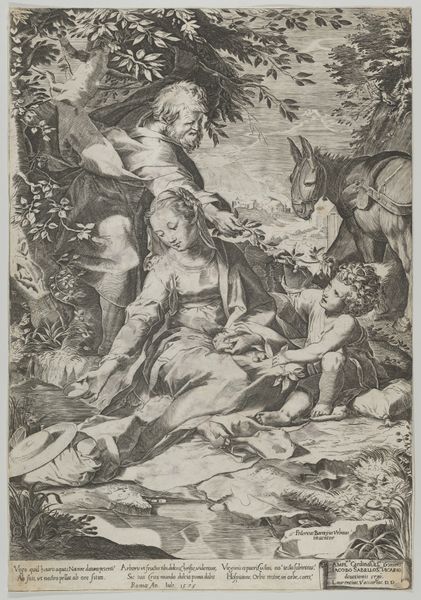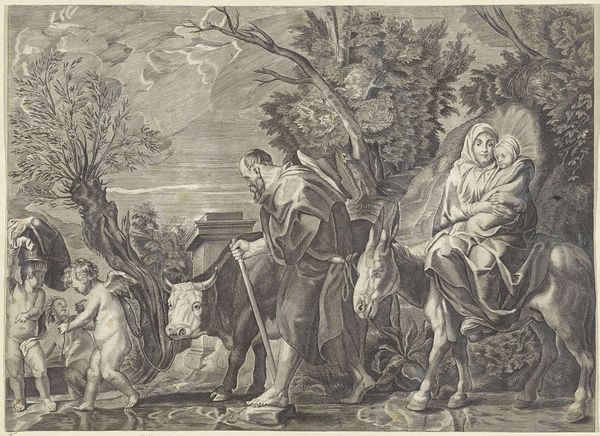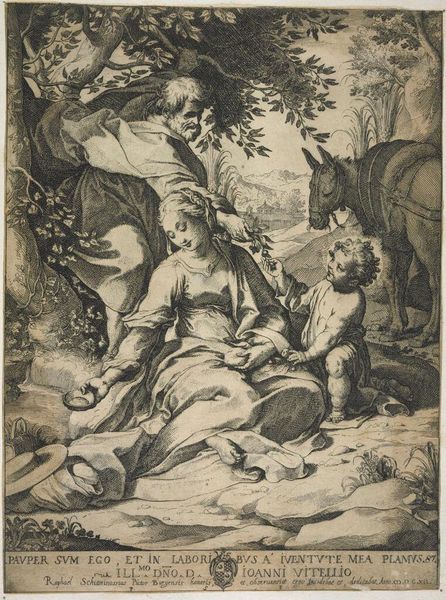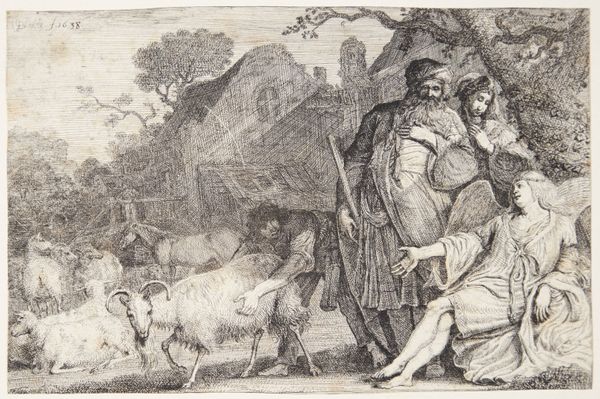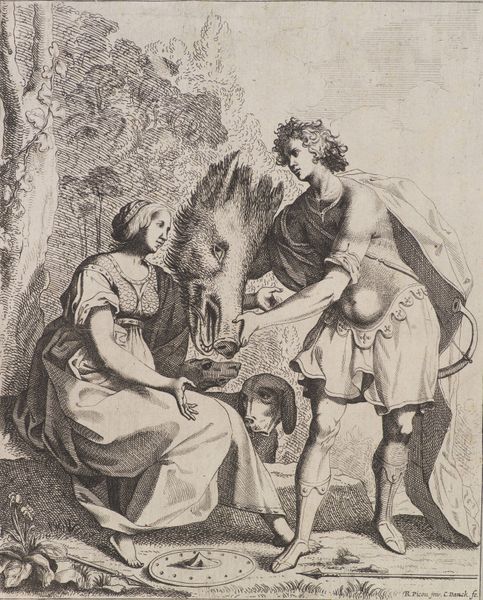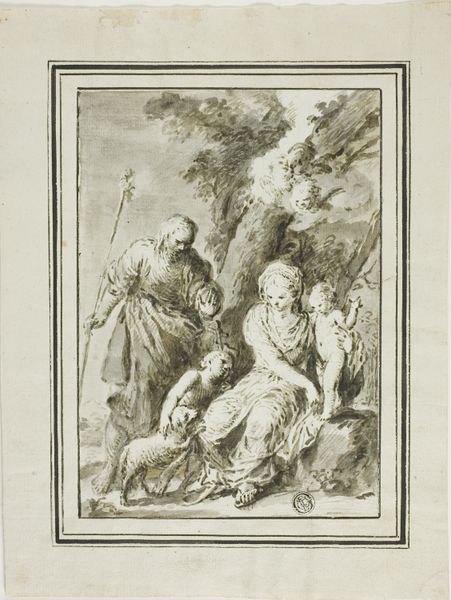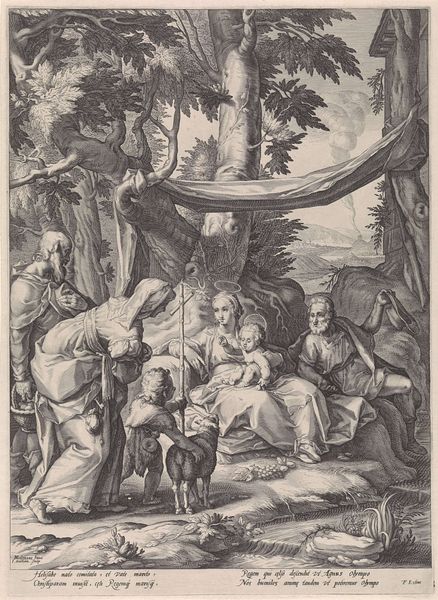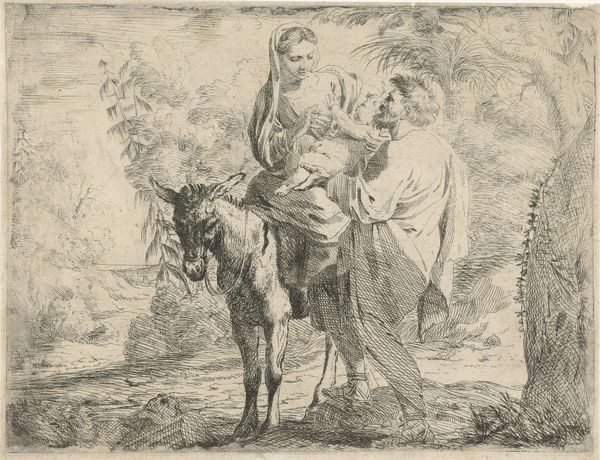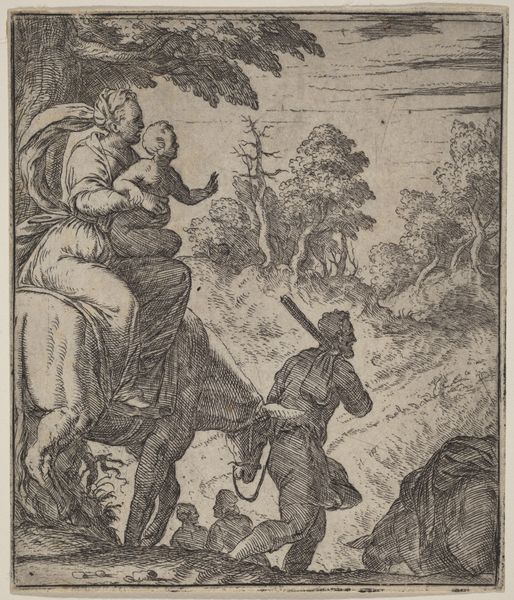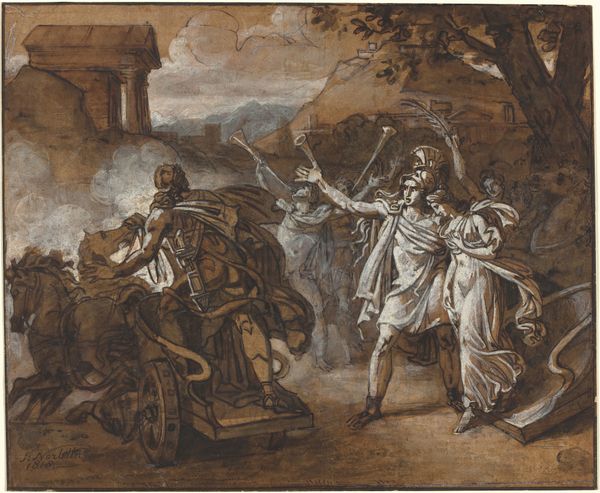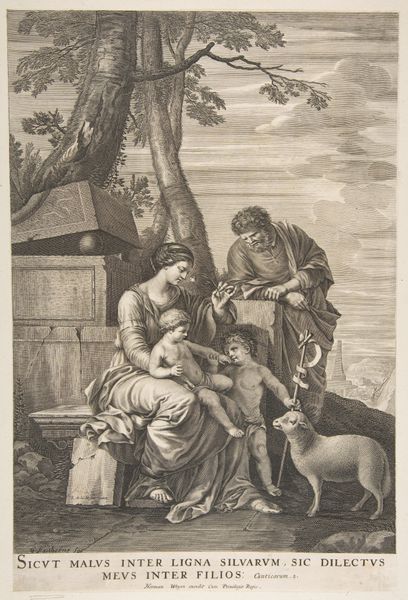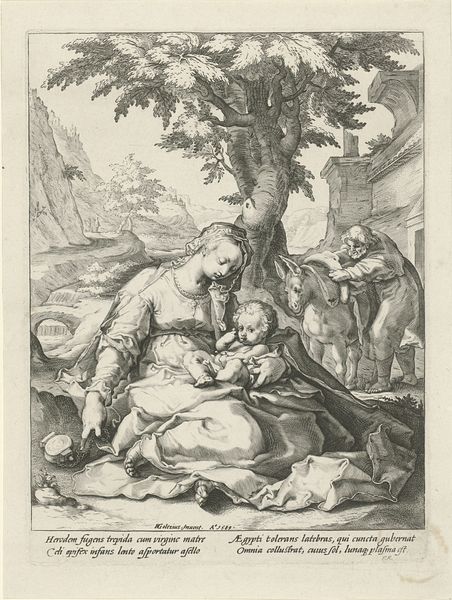
oil-paint, oil, canvas
#
portrait
#
woman
#
baroque
#
animal
#
oil-paint
#
oil
#
landscape
#
painted
#
figuration
#
oil painting
#
canvas
#
child
#
history-painting
#
angel
Dimensions: 42.5 x 32.3 cm
Copyright: Public Domain
Curator: Let’s turn our attention to Giuseppe Maria Crespi's "The Flight to Egypt," painted circa 1710-1725. It's an oil on canvas, currently held in the Städel Museum. Editor: It has this... almost earthy feel, doesn’t it? You can almost smell the dust on the road and feel the rough fabric. Curator: Absolutely. Crespi was known for imbuing religious scenes with a naturalism rarely seen at the time. Think of the religious and political implications of picturing divinity so accessibly! Editor: And look at how he renders the donkey – it's not idealized at all, is it? You can see the weight of Mary and Jesus, and even the details of its bridle. It makes you wonder where he got his model; perhaps from a local farm rather than a noble's stable. Curator: That's precisely the point! Crespi wasn't afraid to democratize his imagery. "The Flight to Egypt" was a popular theme, reflecting a time of religious turmoil and upheaval. Crespi's naturalistic rendering spoke directly to ordinary people experiencing their own struggles and forced displacements. Editor: I see your point about accessibility. Even the colors and texture communicate struggle and earthly connection; the rough canvas and dark colors reflect an environment far from ideal, further reinforced by that tangible donkey that looks worn and real. Curator: Right! It's as much about the immediate social context and earthly human condition as it is about grand religious history. Crespi almost anticipated the shift from the Baroque ideals toward a more…bourgeois sensibility, depicting relatable figures instead of aloof archetypes. Editor: Yes, thinking about materiality helps bring it to life. The angel almost feels secondary. More focus on their survival as laborers fleeing oppression. I'd love to know where the canvas came from, and if Crespi grounded his pigments himself. It would deepen the connection to the narrative itself, this notion of working the land. Curator: It offers such a grounded perspective to the viewer. This truly underscores how images like these operate within society, helping construct a dialogue around socio-religious life and belief at the time. Editor: Considering the materials used and the accessibility of the form itself truly humanizes it, allowing us to connect with the conditions under which they lived.
Comments
No comments
Be the first to comment and join the conversation on the ultimate creative platform.
